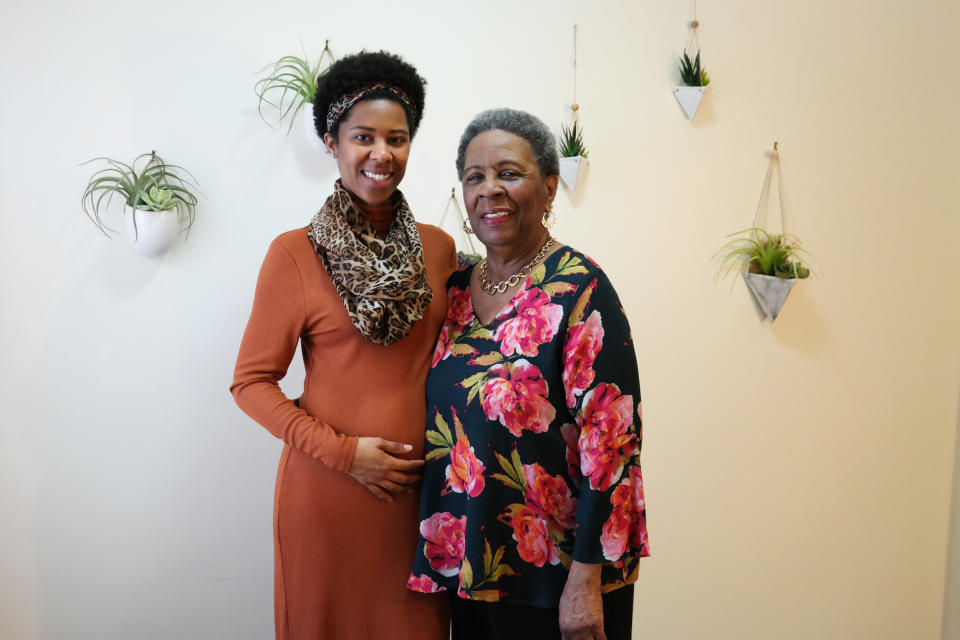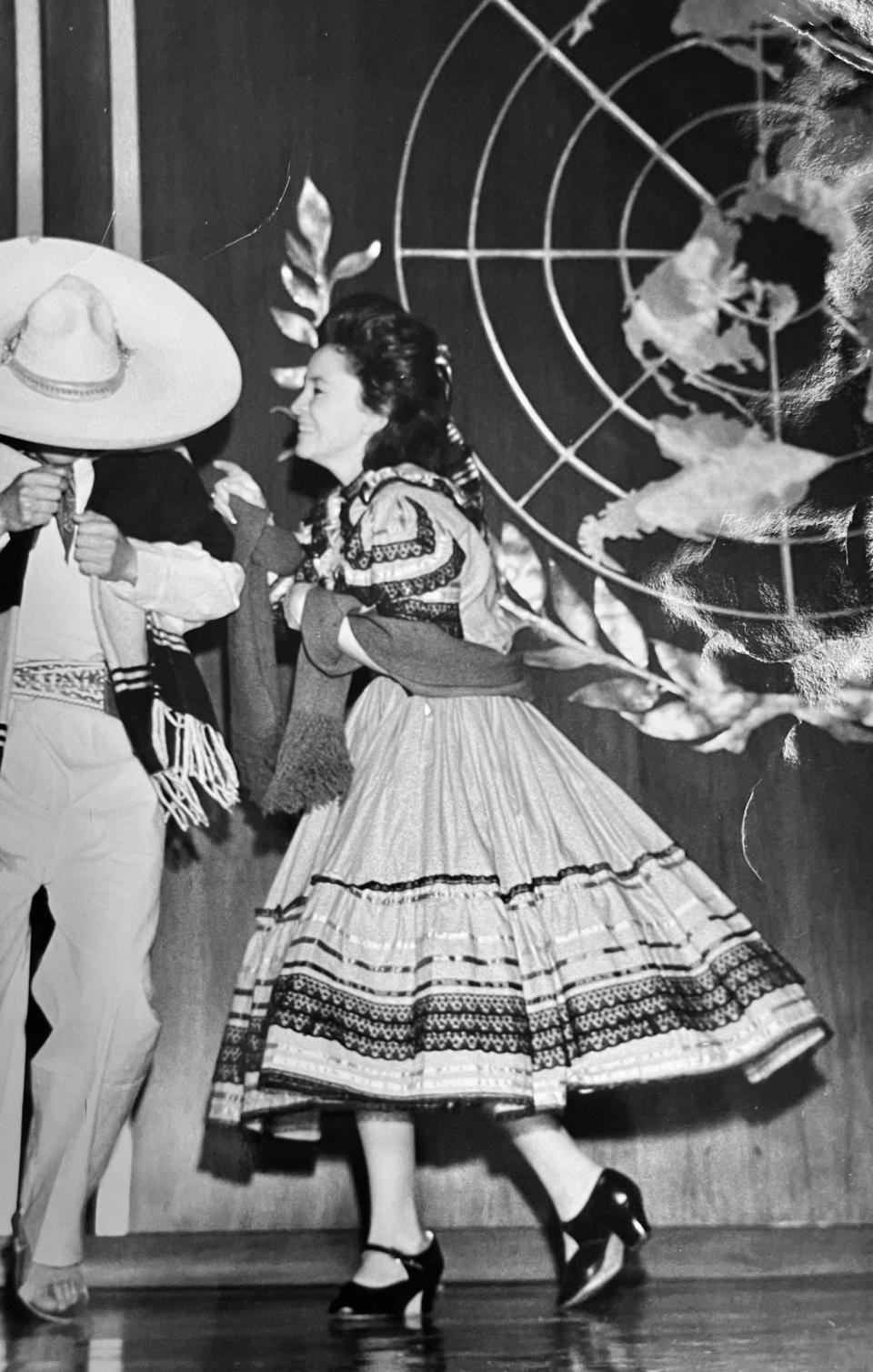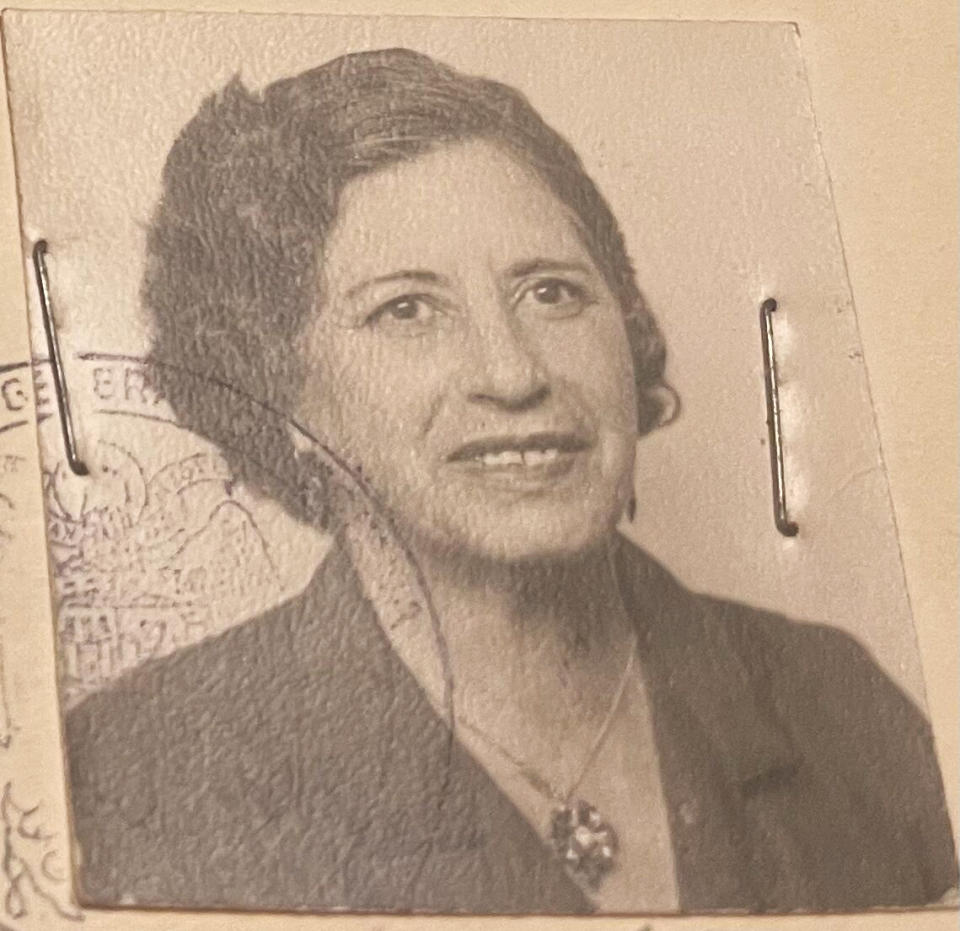'Appreciation for one's roots': Latino professionals honor heritage on social media
- Oops!Something went wrong.Please try again later.
Bismarck Lepe's earliest memories of spending time with his parents are riding in the family's Ford Granada in the early 1980s as they went from Mexico to Southern California to pick lemons and strawberries, then to the Central Valley to pick apricots, peaches and nectarines, then to northern Washington to pick apples — and then back to Mexico.
In Gridley, California, especially, he remembered how the "brutally cold" mornings would become warm by noon. It became a kind of "Groundhog Day" routine as he followed his parents’ field work, occasionally sharing housing with other migrant workers along the West Coast and knowing just when the high temperatures would become more comfortable.

“I think living those first six years with my parents as they moved from city to city every couple of months allowed me to just be more adaptable,” Lepe told NBC News from Tiburon, California.
Lepe, an "angel" investor (one who primarily backs startups) and the founder and CEO of the outsourced product delivery company Wizeline, recently wrote about his family’s emigration story leaving Mexico and settling in Oxnard, California, in a LinkedIn post that has received hundreds of responses and dozens of comments.
In honor of National Hispanic Heritage Month, professionals like Lepe from San Francisco to Seattle to Miami are reflecting on their family’s history and contributions in celebratory social media posts highlighting their relatives' and ancestors' work and journeys.
“I wasn’t ashamed of being Mexican American, but for many years, I did consider it a handicap,” Lepe wrote. “Everybody around me who was successful spoke English and didn’t look like me."
Lepe remembered his parents’ decision to stop moving for work and make his education a priority when he was of kindergarten age.
It was when Lepe pursued higher education and met other Hispanic and Latino students whose parents worked in a variety of fields — from business to law to medicine — that his perspective widened, and he started to see his multicultural experience as a "superpower."
“My parents showed me that with hard work, anything is possible. Someone can be smarter than you, but if you’re willing to just spend more time at solving a problem, you’re likely to get it done,” he said.
For over five decades, recognizing Hispanic and Latin American lineage has been observed, starting with Hispanic Heritage Week and then expanding to Hispanic Heritage Month in 1988. The reasoning behind sharing the course of the month between September and October reflects the independence days of several Latin American countries, according to Geraldo Cadava, a professor of history and Latino studies at Northwestern University.
“I think I've also seen this year more than other years, people not even calling it Hispanic Heritage Month, calling it Latinx Heritage Month or Latino Heritage Month, just kind of on their own. So, it's also a moment, I guess, in that sense, to appreciate the ways in which conversations about Latinos are also changing,” Cadava said.
“I don’t think you’re going to get any number of Latinos to say that Latinidad means the same thing to them," said Cadava, "and that’s why I think it makes sense that they would be celebrating their own personal stories."
For the Austin, Texas-based apparel and accessories designer Liliana Damaris Pope, learning about a Panamanian American nurse who started the National Association of Hispanic Nurses honored in a Google Doodle inspired her to write about her Afro Latina heritage for the first time on social media.
“My husband showed me that Google had shown this imagery of a Panamanian nurse, and I had not known about her previously, and reading through the information, educating myself, I just felt empowered to share it because I knew that there were other Panamanian people like myself who weren't aware of her contributions,” Pope told NBC News from Austin.
Pope said she was born and raised in a Panamanian and West Indian family in Miami and felt that diversity was a part of her culture and outlook.

Pope said both her mother and grandmother helped her to become better and stronger through their investment in her education and through focusing on “being informed and being kind, and never forgetting your roots, where you come from and always helping your Latin people, and just being proud of identifying as Latina.”
“I was very shy growing up as an only child. So, she really tried to instill in me, don't be afraid to learn. Don't be afraid to ask questions,” Pope said of her late mother, Edna Anayansi Larrier.
That remembrance of imparted love and wisdom is what inspired Yusuf Mehdi, who leads product marketing for Microsoft’s consumer products, to also write for the first time on social media about his mother, María de Lourdes Sotomayor Mehdi.

“My mom championed things like a love of family and family came first and above everything. We’d have Sunday night dinners. We would talk about the family and she was very caring and supportive. That was a big part,” Mehdi, who identifies as Hispanic Latino and shares his father’s Indian ethnicity, told NBC News in Washington.
Mehdi said his mother, who passed away about a month and a half ago, grew up in Mexico City and taught kindergarten and middle school students.
“As a teacher, she taught me a lot about the value of education, about always learning, about having a growth mindset,” he said.
Mehdi wrote about his mother’s love of dance and how her performing “El Jarabe Tapatío,” or the Mexican Hat Dance, to her students helped bring him closer to his heritage and identity.

Mehdi recalled his mother wearing a blue Mexican dress and making him wear a classic charro suit when he was about 10 years old — and then taking him to her job at a Washington-based high school where she performed the hat dance.
“Occasionally, she’d grab me and make me dance with her, which was embarrassing to me as a kid," he said, "but I loved it and the thing that was amazing, I see all of these high school students … they would just break into these smiles."
Mehdi's mother was a first-generation immigrant and met his father, Ishaque, in Washington.
“And to come with that sense of adventuresome spirit to a new country to meet and marry a man from a different country in a different language and to make a life here, she inspired me daily about what it’s like to go and make the most of the world, see the world and grow,” he said.
"You have to look for tomorrow"
Amparo Alvarez was born and raised in northwestern Spain in the city of Orense and worked as an independent seamstress.
“She used to tell you, you have to look for tomorrow, not today. If you have a dollar, don’t spend it today. Save it for a rainy day,” said her granddaughter Ampara, now of Staten Island, New York.

Little did Amparo know that decades later, her great granddaughter, this journalist, would share that heritage on social media.
On a visit to Havana to visit her aunt, Amparo met a Palestinian Arab merchant named Yasin Mohammed Tayeh, whom she would eventually marry. She moved with him to his East Jerusalem neighborhood of Beit Hanina after giving birth to their son.
Decades later, Amparo moved to Brooklyn, New York, where she brought her needlework skills and worked in a loft amid dozens of machines, cutting and sewing school clothing.
Her granddaughter said Amparo never forgot her family back in Spain and often wrote them letters.
Just like for many social media users, telling family stories is a way to keep their Hispanic and Latino legacies alive.
“The more you know something, then the closer you can get to it,” Mehdi said.
Follow NBC Latino on Facebook, Twitter and Instagram.

